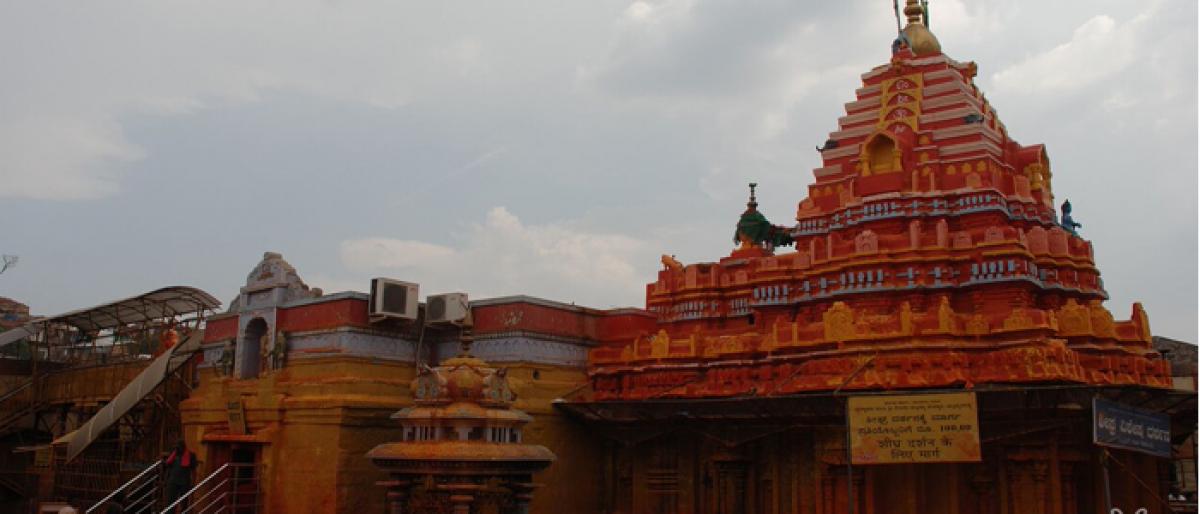Live
- Munirathna Attacked in Bengaluru
- Centre Revives Coffee Development Plan to Aid Farmers- Goyal
- Sensational Crime Incidents in Andhra Pradesh and Telangana: 2024 Year in Review
- Tragic Loss for Beejady Village: Lance Havaldar Anoop Poojary Among Five Soldiers Killed in Poonch Accident
- Mass Rally Organized by BJP in Hyderabad on Atal Bihari Vajpayee's Centenary Celebration
- J&K: With over 25,000 houses built under PMAY, Doda ranks second in Jammu region
- Celta Vigo extend all-time club top-scorer Iago Aspas’ contract till 2026
- BGT: Kaif gives preference to Jaiswal-Rahul opening pair for Boxing Day Test against Australia
- Odisha CM Majhi, Naveen Patnaik extend Christmas greetings
- Icebreaker Keyboard: AluminIum Design Costing as Much as a MacBook Pro
Just In

Belgaum now renamed Belagavi, is hardly the place that comes to mind when we think of a getaway in Karnataka. It is Mysore, Hampi, Chikmagalur, Coorg, coastal areas like Mangalore and Gokarna, and the wildlife sanctuaries that steal the limelight. However, even Belgaum has plenty to offer.
Belgaum now renamed Belagavi, is hardly the place that comes to mind when we think of a getaway in Karnataka. It is Mysore, Hampi, Chikmagalur, Coorg, coastal areas like Mangalore and Gokarna, and the wildlife sanctuaries that steal the limelight. However, even Belgaum has plenty to offer.
It is located close to the Western Ghats, near the foothills of the Sahayadri mountain range in northern Karnataka. Belgaum is the capital of the eponymous district, which prides itself as the home of Rani Kittur Chennamma, the valorous queen, who opposed the British rule. This area is known as the Rice Bowl of north Karnataka. Thanks to its geography, it is a happy blend of the cultures of three states – Karnataka itself, Maharashtra and Goa.
On our visit, we were part of a conducted group tour so we did all the touristy things in Belgaum aka Belagavi, Belgavi and Venugrama meaning, roughly, bamboo village, in local parlance. We first visited the famous Military Mahadev Temple, which is remarkably clean and well-maintained. It is so called because of its long-standing use for worship by army personnel and of course, it was later thrown open to the public. There is a small and carefully maintained park here, which is very popular with children.
We next checked out the Belgaum Fort said to have been built by Bichiraja, a chieftain of the Ratta kings in the 13th century. Later it passed through several hands among which were the Yadavas of Devagiri dynasty, the Khiljis, Vijayanagar kings, the Marathas and the British. Many of the rooms and main structures are in a dilapidated condition but the walls and large moat are still intact. The guide told us that Mahatma Gandhi was imprisoned here briefly by the British. The guide told us of another once beautiful temple some distance away called Chikki Bsasdi, which is not in very good condition now, he said.
Located inside the fort is the Chalukyan-style, 13th-century Jain temple, Kamal Basati aka Bsadi. Known for its superb stonework. It was deserted when we reached. The main deity here is Neminatha, a black-stone idol on a stone pedestal. The word Kamal in the name of the temple is attributed to the temple ceiling, which depicts a kamal or lotus with 72 petals, displaying images of the 24 Tirthankaras or holy figures of Jainism. We were struck by the beauty of the temple especially its frontage with festooned rows of beautifully carved figures and the image of Bhagwan Parshvanath resting under the shade of a seven-hooded serpent. There are shrines to Ganesha and Durgadevi at the entrance to the fort.
The next morning, we left for Gokak Falls, which are located about an hour and a half from Belgaum. There are green forests bordering the area and it was a very scenic spot. We found three or four other groups of tourists and picnickers from Gokak town. It is a very popular tourist stop including for day-trippers. The guide told us that there was another small but scenic stepwise waterfall called Godchinamalaki Falls, which is around 65 km from Belgaum but it was not part of our itinerary.
Another place, which was on our itinerary was the Yellamma temple, built for Renuka Devi, mother of the Vishnu avatar Parashurama. We drove towards it noticing dozens of windmills alongside the road. After visiting this very colourful and crowded temple, we returned to the city and in the evening visited the Ramakrishna Mission. Facing this was a house in which Swami Vivekananda had lived for a week and we visited this too. Both these places were among the most serene spots in the city.
We rushed through the rest of the itinerary—the Gothic-style St Mary's Church, Kapileshwara temple and Safa Masjid. They are all worth your time but they all have very specific timings so check before you go. At the Safa Masjid, there are additional restrictions. We picked up some Gokak handicrafts and some local delicacies like the Belagavi Kunda, which is made of khoya. We also purchased chiroti, holige, godihuggi, etc, before we began our return journey.

© 2024 Hyderabad Media House Limited/The Hans India. All rights reserved. Powered by hocalwire.com







